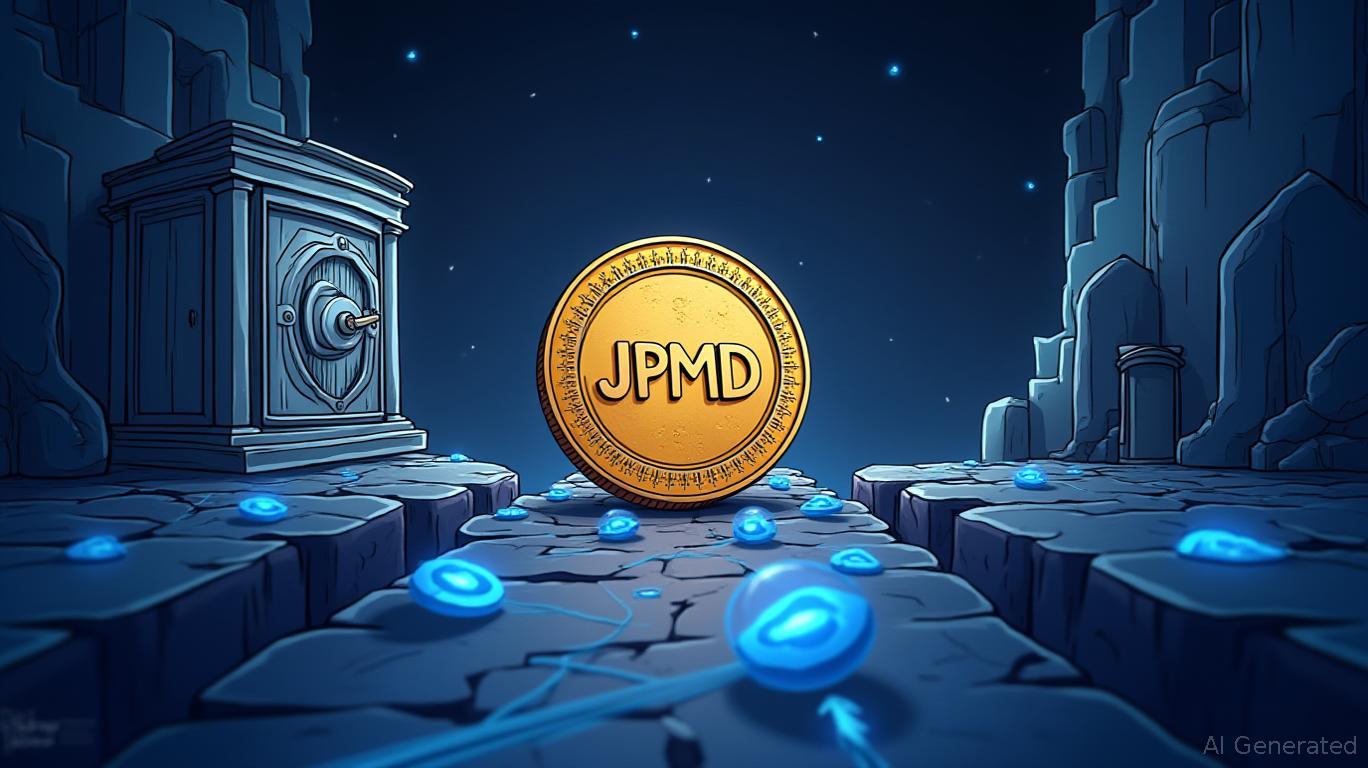The Institutional Blockchain Revolution: JPMorgan's JPMD Token and the Rise of Interoperability
The financial sector is on the cusp of a paradigm shift as JPMorgan Chase's new JPMD token pilot with Coinbase's Base blockchain signals a breakthrough in institutional adoption of blockchain technology. This collaboration not only bridges the divide between traditional finance (TradFi) and decentralized finance (DeFi) but also creates a compelling catalyst for blockchain interoperability—driving value for firms like Coinbase (COIN) and Chainlink (LINK). Below, we analyze the strategic implications and investment opportunities arising from this milestone.
The JPMD Token: A Blueprint for Institutional Blockchain Adoption
JPMorgan's JPMD token represents a seismic shift in how institutional capital interacts with blockchain infrastructure. Unlike stablecoins, which are asset-backed but operate outside regulated banking systems, JPMD tokens are direct claims on deposits held at JPMorgan. This design ensures compliance with banking regulations while offering the speed and scalability of blockchain. The pilot involves transferring JPMD tokens between JPMorgan's private blockchain and Coinbase's public Base blockchain, enabling seamless cross-border settlements and on-chain asset management.

The significance lies in its interoperability framework. By connecting JPMorgan's private network with Base, a public Ethereum layer-2 blockchain, the pilot demonstrates how TradFi institutions can leverage decentralized infrastructure without sacrificing regulatory oversight. This model could become the standard for tokenizing trillions in institutional assets, from commercial deposits to real-world assets (RWAs).
Why Coinbase (COIN) Benefits
Coinbase's Base blockchain is positioned as the gateway to TradFi-DeFi convergence, and JPMorgan's pilot validates its technical and strategic advantages:
1. Speed and Cost: Base's sub-second settlements and sub-cent fees make it ideal for high-volume institutional transactions.
2. Regulatory Alignment: Its design prioritizes compliance, attracting banks and corporations wary of unregulated chains.
3. Ecosystem Momentum: Partnerships with JPMorgan and Shopify (which now accepts USDC on Base) signal growing institutional trust in Base's infrastructure.
Coinbase's stock has risen 22% since Q2 2024 on news of the JPMD pilot and Base's RWA initiatives. However, volatility persists due to macroeconomic uncertainty. A sustained institutional adoption wave could push COIN toward its 2021 highs ($330), but investors should monitor regulatory clarity on stablecoins and CBDC developments.
Chainlink (LINK): The Silent Enabler of Interoperability
While Coinbase provides the blockchain infrastructure, Chainlink's oracles are critical for ensuring cross-chain trust and data integrity. JPMD's success hinges on seamless integration between JPMorgan's private ledger and Base's public network—a process requiring real-time data feeds and smart contract execution. Chainlink's decentralized oracles:
- Validate JPMD's on-chain/off-chain parity, ensuring tokens accurately reflect deposit balances.
- Enable cross-chain composability, allowing JPMD to interact with DeFi protocols (e.g., lending, staking).
LINK has underperformed Bitcoin by 15% since January . This divergence presents an opportunity: If JPMD's interoperability model scales, demand for Chainlink's oracle services will surge, potentially driving LINK toward its 2021 peak ($43).
Investment Thesis: Riding the Institutional Wave
The JPMD pilot marks a turning point for blockchain adoption, with three actionable takeaways:
1. COIN: Buy on dips below $175, targeting $250–$300 if Base's institutional partnerships accelerate.
- Risk: Regulatory delays, competition from Solana/Ethereum.
2. LINK: Accumulate below $10, aiming for $20+ as interoperability use cases expand.
- Risk: Smart contract vulnerabilities, centralization concerns.
3. Sector-Wide Catalysts:
- U.S. Senate's GENIUS Act vote (stabilizing stablecoin regulations).
- JPMorgan's pilot results (Q3 2025).
Conclusion: A New Era of Financial Infrastructure
JPMorgan's JPMD token pilot is not just a technical experiment—it's a strategic blueprint for how institutions will harness blockchain to reduce costs, improve speed, and access new markets. For investors, the firms enabling this transition—COIN for infrastructure and LINK for trust—are poised to capture disproportionate value. While risks remain, the tide is turning toward institutional blockchain adoption. The question is no longer if, but when—and the early movers will dominate.
Invest with caution, but invest.

Comments
No comments yet